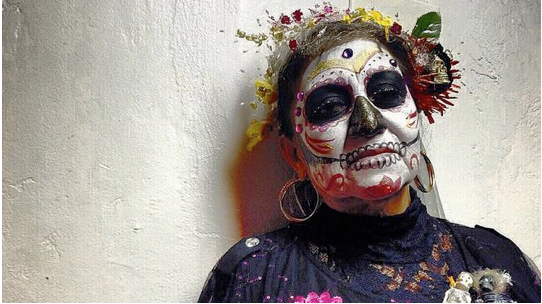CommentsLATINO PERSPECTIVE-Trishna Patel, Media Director and Travel Writer @RomanceTravelConcierge, sat down with George Sifuentes in the summer of 2015 to discuss the challenges of approaching strangers, the pressures that come with social media notoriety, and why he attributes his focus on LA’s Latino community to time spent with his grandmother. (Photo: A Sifuentes’ photograph)
Patel asked him to describe his favorite things about shooting in Los Angeles -- what are his favorite areas and why?
He responded by saying that the best thing about shooting in LA is the variety of people and neighborhoods that are so close to one another. Hands down his favorite place to shoot is Downtown on Broadway, running through the historic core where the city’s oldest souls and newest inhabitants walk side by side. His second favorite spot is Boyle Heights/East LA. To Sifuentes, Mexican culture is so visually strong in these areas that it's highly unlikely he’d leave without finding anything good. His third favorite spot is Venice Beach. He argues, if you look beyond the tourist trail you’ll find some of LA's truest characters that are influenced by art, music and gang culture.
Another good question asked by Patel was, what exactly is it about people that Sifuentes wants to capture and portray?
He answered by saying that he wants to portray truth and originality in his subjects – and for his audience to look at his portraits and understand without a doubt that his subject is the true and beautiful character he or she is.
The Latino community has been Sifuentes’ home and Patel asked him about his particular interest in LA’s Latino community. Since he grew up with young parents, he spent a lot of time with his grandparents. For him, photographing streets in LA is a nostalgic act – he used to walk on Cesar Chavez Avenue and Grand Central Market with his grandmother. (Photo left: George Sifuentes)
Being Latino here means so many different things, adds Sifuentes. “We are [one of] the few communities in Los Angeles that can point to five or more generations that were born and raised in this city. Documenting both the older and younger generations as well as observing the varying degrees of mainstream influence is very interesting to me.”
Finally, he argues thatspeaking Spanish is everything when it comes to photographing the Latino community. It establishes a common bond which leads to trust; plus Latinos, mostly the older ones, want to know why the hell you want a picture of them in the first place. The elderly have no understanding as to why Sifuentes would want to photograph them. They could care less about his photographic passion and most of the time they are not even aware of their own beauty.
I think Trishna Patel did a great service to the Latino residents of Los Angeles by conducting this interview with Sifuentes; he raises a very important awareness of what Los Angeles really is. He shows us a view of this city that is hard to document by any other means.
I just hope that residents and visitors alike learn to appreciate the importance of our city’s great diversity; how it has and continues to contribute to the greatness of the State of California and to our country as a whole.
After all, Los Angeles is one of the largest and most diverse cities in the world, and the second largest in the United States. It would be hard to imagine Los Angeles without its Latino community.
Thank you George Sifuentes for your contribution to our city.
(Fred Mariscal came to Los Angeles from Mexico City in 1992 to study at the University of Southern California and has been in LA ever since. He is a community leader who serves as Vice Chair of the Los Angeles Neighborhood Council Coalition and sits on the board of the Greater Wilshire Neighborhood Council representing Larchmont Village. He was a candidate for Los Angeles City Council in District 4. Fred writes Latino Perspective for CityWatch and can be reached at: [email protected]) Edited for CityWatch by Linda Abrams.
-cw
CityWatch
Vol 14 Issue 5
Pub: Jan 19, 2016
Sidebar
Our mission is to promote and facilitate civic engagement and neighborhood empowerment, and to hold area government and its politicians accountable.

 CityWatch Los Angeles
Politics. Perspective. Participation.
CityWatch Los Angeles
Politics. Perspective. Participation.
01
Thu, Jan















